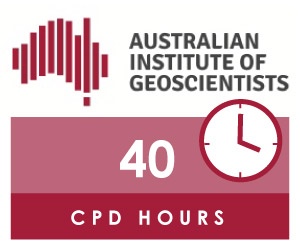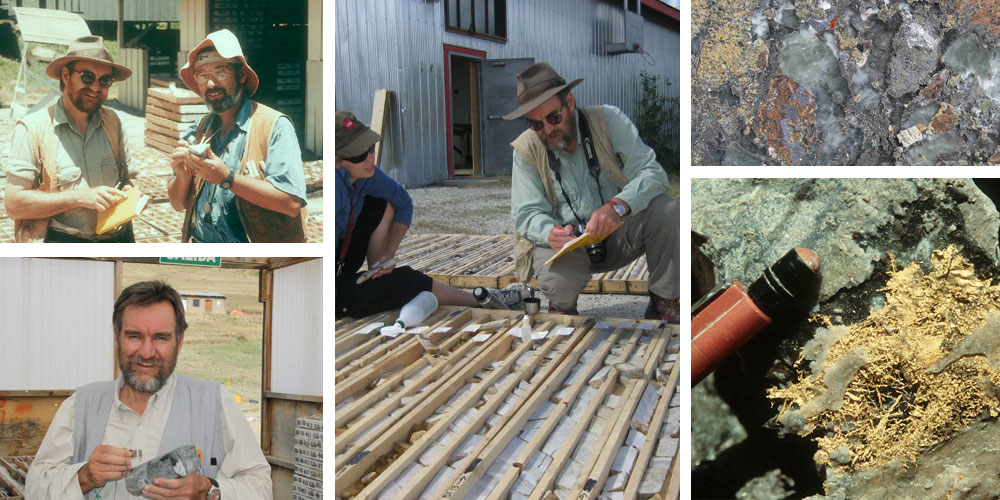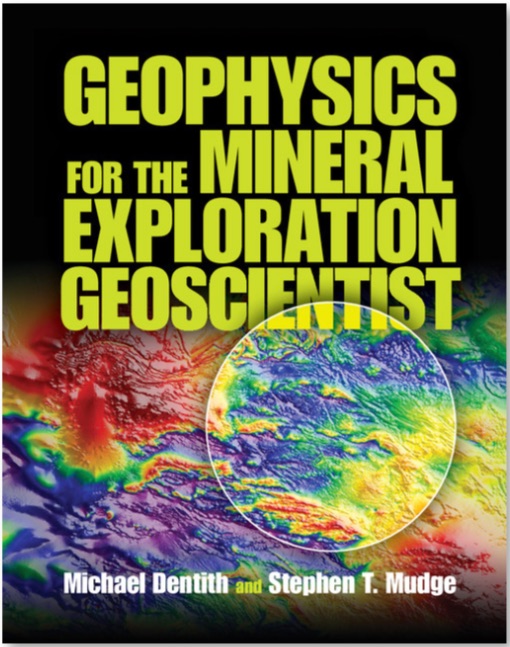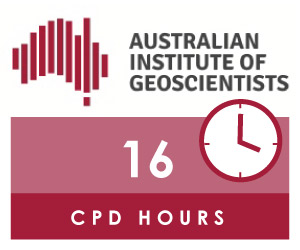 The Division of Resources and Energy (DRE), part of the Department of Industry, Resources and Energy in New South Wales, is currently reviewing its Guidelines for Community Consultation Requirements for Exploration and the associated community consultation reporting information.
The Division of Resources and Energy (DRE), part of the Department of Industry, Resources and Energy in New South Wales, is currently reviewing its Guidelines for Community Consultation Requirements for Exploration and the associated community consultation reporting information.
One of the conditions on titles is that title holders must undertake community consultation according to the guidelines set out by the DRE.
A draft of the new Exploration Code of Practice: Community Consultation is now available for public comment.
The draft Code:
The draft Code will apply to all titles (coal, minerals and petroleum) issued after the publication of the Code, through an amended condition of title. The community consultation conditions on minerals titles will be amended to be consistent with those for coal and petroleum.
The public are invited to submit their feedback on the draft Exploration Code of Practice: Community Consultation. Information on how to lodge submissions is available from the DRE web site. Submissions received before the 30 November, 2015 will be considered in the finalisation of the draft Code.
A recent judgement in a case relating to a dispute between parties involved in a Western Australian iron ore project contained several important lessons for Competent Persons preparing statements of Exploration Results, Mineral Resource and Ore Reserve estimates. The judgement was handed down on 14th August, 2015 following hearings in the Federal Court of Australia during June 2015.
Technical reports tendered as evidence in the case were ruled to be inadmissible by the Judge hearing the case. Some of the shortcomings identified by the Judge have been addressed by the 2012 edition of the JORC Code(JORC 2012), largely through mandating the transparent and material assessment of all items included in Table 1 of the JORC Code and mandating the use of an “if not – why not” approach, which itself is an important means of ensuring transparency. The reporting of Exploration Potential has also been further clarified in JORC 2012.
Important lessons arising from the judgement for geoscientists acting as Competent Persons include:
It is worth noting that the situation regarding JORC compliance is currently somewhat different between Australia and New Zealand. New Zealand Petroleum and Minerals has taken the very significant step of requiring JORC 2012 compliance for all reports of Exploration Results, Mineral Resources and Ore Reserves by both companies and state owned corporations. This includes the requirement for reports to be prepared by a Competent Person. This effectively extends JORC compliance to all entities who hold prospecting, exploration and mining permits in New Zealand, not just publicly listed companies. AIG considers this an effective means of extending the benefits of JORC Code compliant reporting to New Zealand’s entire exploration and mining industry.
The AIG Complaints Committee reviewed the conduct of the Competent Person named in the documents relating to exploration results, resources and reserves and elected not to refer the matter to the Institute’s Ethics and Standards Committee. The Complaints Committee found no evidence of professional misconduct warranting further action.
Andrew Waltho
Chairperson, Complaints Committee
21 November 2015
 Christmas is on the horizon and planning is in the air. Why not take advantage of your AIG membership discounts to find the perfect gifts for your family and friends or enjoy relaxing summer holidays away?
Christmas is on the horizon and planning is in the air. Why not take advantage of your AIG membership discounts to find the perfect gifts for your family and friends or enjoy relaxing summer holidays away?
AIG members have access to great savings including:
Gift cards and e-Gift cards: Need a quick and easy gift idea for someone special? Select from our wide range of gift cards including: Westfield, Coles, Wish (Woolworths and Caltex), Kmart, The Good Guys, Harris Scarfe, Rebel Sport and more.
Receive exclusive discounts on e-gift cards for Myer, Flight Centre, David Jones and other retailers.
Movie Tickets: Treat someone to a night at the movies at a film of their own choice. Gift vouchers available for all major Australian cinemas including tickets for Gold Class, Lux, the candy bar and IMAX. E-Vouchers tickets are available for Hoyts and Palace cinemas.
Lifestyle experiences and Gifts: Take a walk on the wild side and give an experience like no other. Choose one of many hair raising experiences like car racing, balloon rides, jet boating and more with RedBalloon and Adrenalin.
Online shopping: Avoid the crazy crowds and shop for your loved ones via our online shopping hubs. Enjoy a range of discounted toys and manchester, electronics, magazine subscriptions, flower deliveries, IT products and services all at the click of a button!
Accommodation: Indulge yourself for less and book a room with Best Western across Australia, New Zealand and Fiji or with HotelClub Partner Network at thousands of hotels worldwide.
Dining: Christmas lunch is on us this year with access to generous discounts at selected restaurants across Australia, including two for one meals.
For more information, visit the AIG Member Advantage website or call 1300 853 352.
 Corbett Menzies Cunliffe Pty Ltd are again holding their “an introduction to porphyry Cu-Au exploration” field training course in the Orange area, NSW from 28 Feb to 5 Mar 2016.
Corbett Menzies Cunliffe Pty Ltd are again holding their “an introduction to porphyry Cu-Au exploration” field training course in the Orange area, NSW from 28 Feb to 5 Mar 2016.
This course will provide field-based training to allow the participant to begin exploration for porphyry Cu-Au deposits. It will be run in the Orange area NSW, mapping field exposures and drill core from the Cargo and Copper Hill exploration projects, and drill core from the Cadia-Rideway and North Parkes porphyry Cu-Au deposits. Mapping will emphasise the identification of porphyry veins styles, alteration styles, mineralisation, structure and lithologic variations. Introductory lectures will include: the staged evolution of porphyry systems which includes the role of alteration, structure and breccias, and moves on to the exploration environment including the erosion level above an ore zone and also mapping techniques.

Cost: $3500 (+GST) pp and 10 places for unemployed geologists at $1750 (+GST) pp. Fees include accommodation, bus travel, meals and (take home) field equipment. Funding assistance is available for NSW young geoscientists who are AIG members – check out the website.
Places are limited to 25.
Instructors: Dr Greg Corbett, Doug Menzies and Stuart Hayward.
Duration: 28 February to 5 March 2016 with 5 days of field work (field days might be substituted for lectures in really bad weather). The agenda is as follows:
Sunday 28/2/16 – arrive by midday with an afternoon of lectures (compulsory).
Monday 29/2/16 – Cargo porphyry Cu prospect – 1:500 scale mapping.
Tuesday 01/3/16 – Cargo & Copper Hill projects – mapping & log drill core.
Wednesday 02/03/16 – Cargo & Copper Hill projects–mapping & log drill core.
Thursday 03/03/16– Cadia Ridgeway Porphyry Cu-Au deposit- log drill core.
Friday 04/3/16 – Goonumbla Cu-Au deposit – Log a cross section of drill core.
Saturday 5/3/16 – Depart.
Evening Lectures might include (1-2 hours):
Registration: www.cmcgeos.com
For further information email: doug.menzies@cmcgeos.com.
Please note that CMC reserves the right to cancel this event should minimum attendance numbers not be met.
Registrations will close on 31 January 2016.
 The Asia Pacific Stock Exchange launched a new set of listing rules last week which are specifically aimed at mining and oil and gas companies.
The Asia Pacific Stock Exchange launched a new set of listing rules last week which are specifically aimed at mining and oil and gas companies.
The rules will take effect from Monday December 14.
It effectively creates a new exchange for public companies a new listing venue which have operations in Asia, Australia and the Pacific region. Companies listed on the APX will be able to use a number of international codes for publicly reporting exploration results, mineral resources and ore reserves.
APX chief operating officer David Lawrence was quoted as saying “This represents a significant step forwards in the internationalisation of mining markets in Australia. Until now, all mining companies listed in [the country] had to report solely under the JORC Code.”
“In developing the new framework we adopted best practices from Australia and a number of different other markets throughout the world [and] we believe it is more efficient for listing and investing in MOG companies than frameworks that currently exist in other markets.”
Mining companies will be permitted to issue reports and announcements that conform to the Australian JORC, Canadian NI-43-101 or South African SAMREC codes while oil and gas companies will use the SPE-PRMS code.
However, mining companies with assets predominantly in Australia, New Zealand or Papua New Guinea will be required to report in compliance with the JORC code.
All codes are considered by APX to be comparable to each other and are recognised and adopted globally for market-related reporting and investment.
AIG has confirmed to the APX that Institute Members reporting to APX will be required to adhere to the codes adopted by APX for public exploration and mining reporting purposes.
The results of the Australian Geoscientist Employment Survey for the September Quarter of 2015 show no improvement in employment prospects for Australia’s struggling geoscientists.
The survey recorded the highest levels of geoscientist unemployment and underemployment since the survey series commenced in 2009.
Australian geoscientist unemployment in the September quarter of 2015 was 15.5% nationally, up slightly from the June quarter result of 15.2%. The underemployment rate was 21.2%, a significant increase on the 19.9% recorded in June.
More than one third of underemployed geoscientists were unable to secure more than 10% of their desired workload.
A total of 926 responses were received to the survey from both AIG members and non-members. Responses were received from the full spectrum of professional geoscience experience, from new graduates to geoscientists with more than 30 years experience.
Unemployment and underemployment rates varied between states.
Insufficient responses were received from Tasmania and the Northern Territory to report meaningful state results.
Geoscientist employment (combined unemployment and underemployment) deteriorated in every state, in line with the national trend. Unemployment fell in Queensland and New South Wales / ACT but this fall was offset by increased underemployment amongst self-employed geoscientists. Underemployment fell dramatically in Victoria, but again, this was more than offset by the increase in unemployment in that state.
New South Wales / ACT and Victoria recorded the greatest increases in the combined unemployment-underemployment rate.
In the latest survey, almost 44 percent of unemployed or underemployed geoscientists had not worked for 12 months or more. This rate has been increasing steadily since June 2012 when collection of this data was added to the survey. The proportion of unemployed geoscientists who are seeking permanent, alternate employment has increased, as has the proportion who have little confidence of returning to employment in less than 12 months. More than 13 percent of geoscientists are now seeking permanent employment outside geoscience. A massive 77 percent of unemployed and underemployed geoscientists have no confidence in their ability to return to work in less than 12 months.
Only six percent of geoscientists regained employment after being unemployed during the September quarter.
Some 80 percent of geoscientists responding to the survey, currently in employment, were full-time employees. Six percent work part-time and the remainder were seeking work as self-employed contractors or consultants.
Respondents currently in employment were asked to comment on their employment conditions for the first time in this survey. Just under 20 percent thought that their employment conditions had improved over the past year, while about 55 percent thought that their conditions had been maintained, and 25 percent thought that their conditions had declined.
Professional association and learned society membership is being maintained by Australian geoscientists, with only four percent of respondents reporting that they were not a member of a professional institute or learned society. More than 80 percent of respondents were members of either AIG or the Australasian Institute of Mining and Metallurgy (AusIMM), demonstrating a commitment to professional standards, ethics, continued professional development and the professional networking opportunities provided by membership.
“The survey results demonstrate, without any doubt, that the ongoing depressed employment situation for geoscientists in Australia are really starting to bite” said AIG President, Mr Wayne Spilsbury.
“If there was any doubt that financial market uncertainty, questions regarding long-term demand for commodities and depressed prices have a profound impact on exploration activity, these figures should dispel that.”
“Australia’s geoscientists are demonstrating incredible resilience in the face of a protracted downturn in their employment prospects”.
“There has been no tangible improvement in stubbornly high unemployment rates since September 2013: two years in which we are seeing more and more talented and experienced professionals with the skills essential to Australia’s long term economic prospectively not being used productively” Mr Spilsbury said.
“The potential solutions AIG and other professional and industry groups have been advancing for two years now have not changed. Governments need to reduce the burden imposed on explorers associated with access to land for exploration which can be done without threatening the environment and while fully respecting the rights and interests of other stakeholders”.
“AIG members would be aware, through recent newsletters and the Institute’s web site, that AIG recently wrote to Mr. Peter Dutton MP, Minister for Immigration and Border Protection proposing the extension of labour market testing (LMT) to overseas geoscientists seeking temporary employment in Australia.” “An Immigration Department representative responding on behalf of the minister confirmed the the intent of the 457 visa program as providing Australian employers with access to skilled overseas professionals at times when local candidates for roles are in short supply.”
“The Commonwealth government is currently implementing recommendations from a recent, independent review of the 457 visa system which included reinstatement of a Ministerial Advisory Council on Skilled Migration (MACSM) to provide advice on skilled migration issues and establishment of a Dedicated Labour Market Resource office (DLMR) to provide policy and statistical advice to the MACSM, which will in future use the results of these surveys with other data to monitor trends in Australian geoscience employment to help deliver appropriate advice to the MACSM.”
“AIG considers this initiative to be positive one, preserving employers’ access to essential skills at times when they cannot be sourced within Australia, while not disadvantaging Australia’s resident geoscientists in lean periods” Mr Spilsbury said.
“Investment in exploration also needs to be supported to promote sustainability and maintain Australia’s resource project pipeline, which underpins the nation’s economic prosperity, has a significant employment multiplier, and drives innovation which improves productivity and leads to the development of new goods and services.”
“The human element of this protracted downturn has not received adequate attention”. “The cyclical nature of geoscience employment in Australia needs to be considered.” “Taxation measures such as income averaging or income splitting, where the working member of a couple is able to allocate part of their income to a partner who cannot work, or cannot secure work, need to be carefully considered”. “Income splitting has been shown to be highly effective in Canada where it enables many productive individuals to stay in work in difficult times” Mr Spilsbury said.
“First and foremost, Australia’s geoscientists need to be able to get back to work where it matters”.
 The NSW Branches of AIG, GSA and ASEG are presenting a two day short course by Prof. Mike Dennith Geophysics for the Mineral Exploration Geoscientist based on 2014 book of same name.
The NSW Branches of AIG, GSA and ASEG are presenting a two day short course by Prof. Mike Dennith Geophysics for the Mineral Exploration Geoscientist based on 2014 book of same name.
This two day course provides a state-of-the-art overview of geophysical exploration methods without recourse to complex mathematical descriptions. It includes descriptions of all the main geophysical methods used in mineral exploration, including gravity, magnetic, electrical, electromagnetic methods. Course participants are guided through the basic physical phenomena, the acquisition and processing of geophysical data, to the creation of subsurface models and their geological interpretation.
The course:
 The course will target practising geoscientists, most likely to be in first ten years of practice, who have had limited exposure to formal education in the application of exploration geophysics, and are keen to build their understanding of this important field of modern mineral discovery technologies in the challenging terrains of Australia, especially where thick sedimentary cover precludes systematic geological mapping and geochemical sampling.
The course will target practising geoscientists, most likely to be in first ten years of practice, who have had limited exposure to formal education in the application of exploration geophysics, and are keen to build their understanding of this important field of modern mineral discovery technologies in the challenging terrains of Australia, especially where thick sedimentary cover precludes systematic geological mapping and geochemical sampling.
The course will be held in The Barbarian Room, Level 3, The Rugby Club, Rugby Place, off 31 Pitt Street, Sydney, 16-17 February, 2016.
Registration information coming soon.
Queensland’s minerals and energy exploration industry has put policy and regulations under the microscope at the fifth annual Exploration Scorecard released yesterday, 13 November, in Brisbane by the Queensland Exploration Council.
 The fifth edition marks the mid-point of a decade-long journey, a key milestone for reflection of achievements and charting a course of what needs to be achieved over the next five years to achieve QEC’s 2020 for Queensland to be recognised as an exploration leader.
The fifth edition marks the mid-point of a decade-long journey, a key milestone for reflection of achievements and charting a course of what needs to be achieved over the next five years to achieve QEC’s 2020 for Queensland to be recognised as an exploration leader.
In a challenging market of low cyclical commodity prices – offset in part by a lower Australian dollar – the scorecard results were on par with industry expectation, with a slight stall in overall progress for 2015.
Despite this however, for the second year in a row, the explorer survey recorded strong improvements in perceptions of exploration permit processing.
Queensland Resources Council (QRC) Chief Executive Michael Roche said the fundamentals of exploration in Queensland were irresistible.
‘It’s no secret that the short-term outlook for commodities is weak but it is a common malaise, and not a point to structural decline,’ Mr Roche said.
‘Queensland has largely untapped mineral and energy reserves; and despite the current downturn, long-term growth in global demand for resources is assured.’
Earlier this week, the International Energy Agency released its annual World Energy Outlook Report which confirmed forecasts for strong growth for export opportunities for our thermal coal, coking coal, gas and uranium.
According to the IEA, Australia’s coal exports are set to grow by over one-third, with 45 percent of the growth being coking coal, which remains an essential ingredient in the making of steel. The report also observed strong opportunity to expand Queensland’s gas export sector, with demand for natural gas in Asia set to skyrocket by 160 percent. With the right policy settings, the outlook for uranium is also strong on the back of an expected 86 percent increase in nuclear electricity generation.
Mr Roche said while we cannot hope to influence international commodity prices, we can be masters of our own destiny through the policies and regulatory environment for exploration.
‘Queensland’s resources sector remains the key pillar of the state’s economy providing one in every $5 and one in every six jobs,’ Mr Roche said.
‘The sector is in pole position to supply the strong demand for resources over the coming decades,’
‘So long as we remain globally competitive and attractive to investors, Queensland will continue to play a critical role in the energy mix.’
The full Queensland Exploration Scorecard report is available here.
The 35th International Geological Congress (IGC35) takes place August 27–September 4, 2016, in Cape Town, South Africa, and seeks submissions for poster sessions and presentations by geoscientists around the world.
Consider presenting on a technical topic in a geoscience speciality or on an aspect of professionalism in geoscience important to a practice area or to the work of your professional association as a self-regulatory body.The program for IGC Cape Town in 2016 covers 49 themes under three overarching topics, including Geology for Society, Geology for the Economy, and Fundamental Geoscience. The Geology for Society topic includes professionalism and Geo-ethics. Field trips, short courses and workshops on each of the topics are also planned.
Deadline for submissions of presentation abstracts is fast approaching – January 31, 2016.
The International Union of Geological Sciences holds IGCs every four years on behalf of its 121 national member countries.
The inclusion of geoscience professionalism and ethics is new at the IGC35. Since 1878, the congresses have served as geoscience’s foremost global scientific gatherings. Beginning in 2016, the International Professional Geology Conference (IPGC) merges with the International Geological Congress, bringing with it an additional focus on geoscience professionalism at the global or international scale.
Professionalism is becoming an increasingly important aspect of geoscience practice. By merging with the IGC, IPGC avoids running a niche global event only on professionalism, eliminates competition for members’ professional-development resources, and builds efficiencies in joining forces with a recurring event that also seeks to attract geoscientists from around the world and across every discipline. The International Union of Geological Sciences’ Task Group on Global Geoscience Professionalism at the 34th IGC in Brisbane, Australia, in 2012, provided further incentive for collaboration, as the task group’s participating organizations comprise the same organizations that previously championed and hosted stand-alone IPGC events.
Corbett Menzies Cunliffe Pty Ltd are again holding their “an introduction to porphyry Cu-Au exploration” field training course in the Orange area, NSW from 28 Feb to 5 Mar 2016.
This course will provide field-based training to allow the participant to begin exploration for porphyry Cu-Au deposits. It will be run in the Orange area NSW, mapping field exposures and drill core from the Cargo and Copper Hill exploration projects, and drill core from the Cadia-Rideway and North Parkes porphyry Cu-Au deposits. Mapping will emphasise the identification of porphyry veins styles, alteration styles, mineralisation, structure and lithologic variations. Introductory lectures will include: the staged evolution of porphyry systems which includes the role of alteration, structure and breccias, and moves on to the exploration environment including the erosion level above an ore zone and also mapping techniques.

Cost: $3500 (+GST) pp and 10 places for unemployed geologists at $1750 (+GST) pp. Fees include accommodation, bus travel, meals and (take home) field equipment. Funding assistance is available for NSW young geoscientists who are AIG members – check out the website.
Places are limited to 25.
Instructors: Dr Greg Corbett, Doug Menzies and Stuart Hayward.
Duration: 28 February to 5 March 2016 with 5 days of field work (field days might be substituted for lectures in really bad weather). The agenda is as follows:
Sunday 28/2/16 – arrive by midday with an afternoon of lectures (compulsory).
Monday 29/2/16 – Cargo porphyry Cu prospect – 1:500 scale mapping.
Tuesday 01/3/16 – Cargo & Copper Hill projects – mapping & log drill core.
Wednesday 02/03/16 – Cargo & Copper Hill projects–mapping & log drill core.
Thursday 03/03/16– Cadia Ridgeway Porphyry Cu-Au deposit- log drill core.
Friday 04/3/16 – Goonumbla Cu-Au deposit – Log a cross section of drill core.
Saturday 5/3/16 – Depart.
Evening Lectures might include (1-2 hours):
Please note that CMC reserves the right to cancel this event should minimum attendance numbers not be met.
Registrations will close on 31 January 2016.